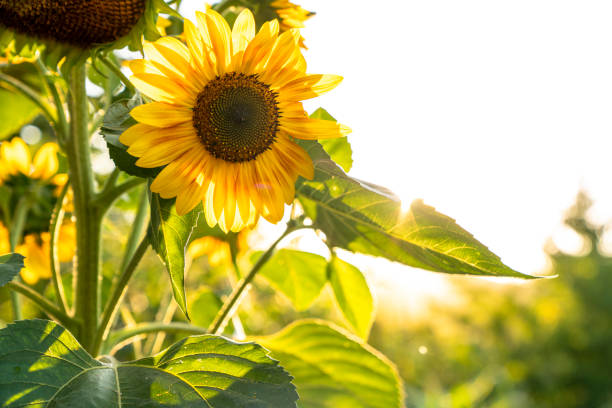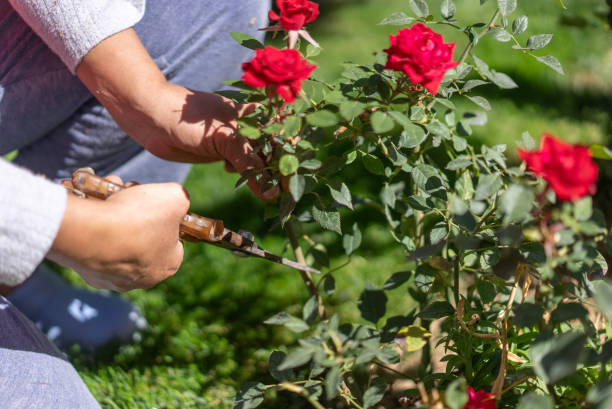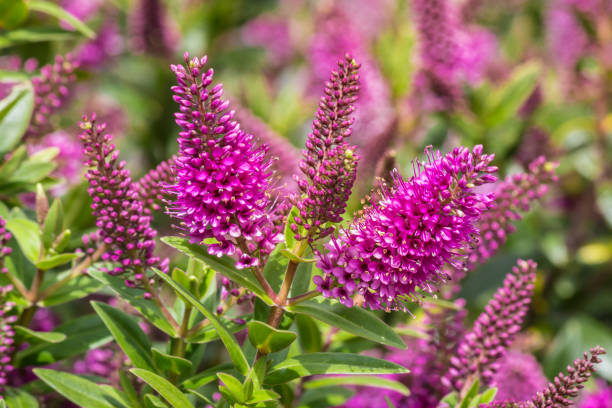Popular for their stunning, sizable flowers, sunflowers are a beloved addition to gardens throughout New Zealand. Whether you possess limited gardening experience or boast an accomplished green thumb, comprehending the optimal timing for sowing sunflower seeds in NZ is essential for accomplishing flourishing blooms. This article examines planting specifics pertaining to these blossoms within New Zealand from ideal sowing schedules to care advice, ensuring your crop thrives with vigor and vitality.
Understanding Sunflowers: A Brief Overview
Helianthus annuus, commonly known as sunflowers, are not just aesthetically pleasing but also have agricultural importance. Their heliotropism ability to follow the movement of the sun during early stages adds to their charm. Let’s take a brief look at why they’re favored by gardeners in New Zealand.
- Visual appeal: With their towering height, sunflowers can enhance the visual appeal of any area.
- Ease of growing: Growing sunflowers from seeds is a relatively easy task, making it an uncomplicated gardening option.
- Benefits: Advantages include their ability to entice pollinators such as bees and provide a source for seeds that can be consumed.
Best Time to Plant Sunflower Seeds in NZ
For sunflower seeds to grow and bloom well in New Zealand, it’s vital to plant them at the right time. The timing greatly influences their development cycle. It’s recommended that they be planted during late spring to early summer when soil conditions are favorable for germination. This is the ideal season in New Zealand as temperatures are conducive for growth.
Timing for Planting Sunflower Seeds in Different Regions
The planting schedule for sunflower seeds differs slightly between the North and South Islands due to New Zealand’s varying climate zones.
| Region | Optimal Planting Period | Climate Conditions | Seasonal Progression |
| North Island | September to early January | Sunflower germination and growth are facilitated by the favorable conditions of the North Island’s warm climate. | September marks the beginning of spring, offering mild temperatures ideal for planting sunflower seeds. As summer progresses, the weather becomes warmer, promoting robust growth and blooming. |
| South Island | October to early January | Although the South Island may have somewhat lower temperatures than the North Island, sunflower cultivation is viable from October to early January due to favorable weather conditions. | October signals the onset of spring in the South Island, offering moderate temperatures conducive to seed germination. As summer approaches, the climate becomes warmer, supporting healthy sunflower growth and development. |
Temperature Considerations for Sunflower Germination
Sunflower seeds require specific soil temperatures for successful germination. Ensuring the soil is adequately warmed up is essential to kick-start the growth process.
- Minimum Soil Temperature: Sunflower seeds typically require a soil temperature of at least 15°C for proper germination.
- Soil temperature is a critical factor influencing seed germination rates and overall plant health. Planting sunflower seeds when the soil is sufficiently warm enhances germination success and accelerates seedling emergence.
Choosing the Right Sunflower Seeds
Selecting the right sunflower seeds is essential for growing sunflowers in your garden. Consider these factors:
Variety
One of the primary considerations when choosing sunflower seeds is the variety. Sunflowers come in various shapes, sizes, and colors, catering to different preferences and garden spaces. Some key varieties to consider include:
- Dwarf Types: These sunflowers are compact in size and are suitable for small garden spaces or containers. They typically reach heights of around 1 to 3 feet, making them ideal for balcony gardens or patio containers.
- Medium-sized Varieties: These sunflowers are versatile and can be grown in both garden beds and larger containers. They typically grow to heights of 4 to 6 feet and come in a wide range of colors, including yellow, orange, and red.
- Giant Types: If you have ample space in your garden and want to make a bold statement, consider planting giant sunflower varieties. These sunflowers can reach towering heights of over 10 feet, creating a stunning focal point in any landscape.
Purpose
Another important factor to consider is the purpose of growing sunflowers. Depending on your objectives, you may choose seeds based on whether you intend to harvest seeds for consumption, extract oil from the seeds, or simply enjoy the beauty of sunflowers as ornamental plants.
- Seed Production: If you’re interested in harvesting sunflower seeds for snacking or culinary purposes, select varieties known for their large, plump seeds with high oil content.
- Oil Extraction: Certain sunflower cultivars are specifically bred for oil production. These varieties typically have a higher oil yield and are well-suited for commercial or home-based oil extraction.
- Ornamental Use: For purely ornamental purposes, you can choose sunflower varieties based on their aesthetic appeal, such as color, size, and petal arrangement. Look for varieties with vibrant blooms and interesting textures to enhance your garden landscape.
Source
When purchasing sunflower seeds, it’s essential to buy them from a reliable source to ensure quality and suitability for the New Zealand climate. Consider the following tips:
- Reputable Nursery or Garden Center: Purchase sunflower seeds from established nurseries or garden centers known for their quality seeds and knowledgeable staff.
- Disease-Free Seeds: Ensure that the seeds you buy are certified disease-free to prevent potential issues with plant health and growth.
- Climate Adaptation: Choose seeds that are well-adapted to the local climate conditions in New Zealand to maximize their chances of successful germination and growth.
Preparing the Soil for Sunflowers

Sunflowers thrive in well-drained, nutrient-rich soil. Preparing your garden bed properly can make a big difference in the growth of your sunflowers:
Soil Testing
Before planting sunflowers, it’s crucial to conduct a soil test to determine its pH level and composition. Sunflowers prefer soil that is slightly acidic to neutral, with a pH range of 6.0 to 7.5. Here’s how to proceed:
- Use a soil testing kit available at gardening stores or send a soil sample to a local agricultural extension office for analysis.
- Follow the instructions provided with the testing kit to collect a representative soil sample from your garden.
- Once you have the results, take appropriate measures to adjust the soil pH if necessary, using amendments like lime to raise pH or sulfur to lower it.
Enriching the Soil
Sunflowers thrive in nutrient-rich soil, so it’s essential to enrich the soil with organic matter before planting. Here’s how to do it effectively:
- Spread a layer of compost or well-rotted manure over the garden bed. Aim for a thickness of about 2 to 3 inches.
- Use a garden fork or tiller to incorporate the organic matter into the soil to a depth of about 6 to 8 inches.
- Ensure that the organic matter is evenly mixed throughout the soil to provide uniform nutrient distribution.
- Organic matter improves soil structure, enhances moisture retention, and provides essential nutrients that promote healthy sunflower growth.
Site Selection
Choosing the right location for your sunflower garden is crucial for their success. Here’s what to consider when selecting a site:
- Sunflowers require full sunlight to thrive, so choose a location that receives at least 6 to 8 hours of direct sunlight per day.
- Avoid areas shaded by buildings, trees, or other structures, as inadequate sunlight can lead to stunted growth and poor flower development.
- Ensure that the site has good drainage to prevent waterlogging, which can cause root rot and other issues.
- Consider factors such as wind exposure and proximity to other plants, as sunflowers can grow quite tall and may require support in windy conditions.
Planting Techniques for Sunflowers
Proper planting is crucial for growing robust sunflowers. Here’s how to plant your sunflower seeds:
Depth and Spacing
When planting sunflower seeds, it’s crucial to consider the depth and spacing for optimal growth. Follow these guidelines for proper depth and spacing:
- Depth: Plant sunflower seeds to a depth of about 2.5 centimeters (1 inch) into the soil. Planting at the correct depth ensures that seeds have adequate soil contact for germination while protecting them from drying out or being washed away.
- Spacing: Sunflowers require space to grow and thrive. Plant seeds approximately 30 to 45 centimeters (12 to 18 inches) apart in rows or clusters. Providing adequate spacing allows each sunflower plant to access sufficient nutrients, sunlight, and water without competing with neighboring plants.
Watering
Proper watering is essential to encourage healthy root development and support the initial growth of sunflower seedlings. Follow these watering guidelines after planting sunflower seeds:
- Initial Watering: Immediately after planting sunflower seeds, water the soil thoroughly to ensure adequate moisture penetration. Watering helps to initiate the germination process by softening the seed coat and providing moisture for seedling emergence.
- Subsequent Watering: Monitor soil moisture levels regularly and water sunflower plants as needed to keep the soil evenly moist but not waterlogged. As sunflowers grow, their water requirements may increase, especially during hot and dry periods. Deep watering encourages root growth and helps sunflowers withstand drought conditions.
Support
Certain varieties of sunflowers, particularly taller ones, may require support to prevent them from toppling over as they grow. Follow these steps to provide support for your sunflowers:
- Staking: Install sturdy stakes or poles near sunflower plants when they reach a height of about 30 centimeters (12 inches) or taller. Drive stakes into the ground at least 15 to 20 centimeters (6 to 8 inches) deep to provide stability.
- Tying: Gently tie the main stem of the sunflower plant to the stake using soft garden twine or fabric strips. Avoid tying too tightly to prevent damage to the stem.
- Additional Support: For extra stability, consider using a trellis, cage, or other support structure to brace sunflowers against strong winds or heavy rain. Providing support ensures that sunflower plants remain upright and reduces the risk of stem breakage or damage.
Caring for Your Sunflowers

Sunflowers aren’t particularly high-maintenance, but they do require some care to flourish:
Watering
Sunflowers require consistent moisture to support their vigorous growth, particularly during their early stages of development and during dry periods. Follow these watering practices to keep your sunflowers healthy:
- Frequency: Water sunflowers deeply but infrequently, allowing the soil to dry out slightly between watering sessions. Aim to provide about 1 to 1.5 inches of water per week, either through rainfall or supplemental irrigation.
- Timing: Water sunflowers early in the morning or late in the afternoon to minimize water loss through evaporation and ensure maximum absorption by the roots.
- Deep Root Watering: Encourage deep root development by watering sunflowers at the base of the plants rather than overhead. This helps the roots grow downward in search of moisture and promotes plant stability.
Fertilizing
To support vigorous growth and robust blooms, sunflowers benefit from regular fertilization with a balanced, general-purpose fertilizer. Follow these fertilizing guidelines to promote healthy sunflower growth:
- Application Schedule: Apply fertilizer once a month during the growing season, starting when the sunflower plants are established and actively growing.
- Fertilizer Type: Use a fertilizer with balanced N-P-K (nitrogen, phosphorus, and potassium) ratios, such as a 10-10-10 or 20-20-20 blend, to provide essential nutrients for sunflower growth and flowering.
- Application Method: Sprinkle the fertilizer evenly around the base of the sunflower plants, taking care not to let it come into direct contact with the stems or foliage. Water the soil lightly after fertilizing to help nutrients penetrate the root zone.
Pest Control
While sunflowers are relatively resistant to pests and diseases, occasional pest infestations can occur, particularly during the growing season. Here’s how to manage common pests and keep your sunflowers healthy:
- Monitoring: Regularly inspect sunflower plants for signs of pest activity, including chewed leaves, wilting foliage, and presence of pests such as aphids, caterpillars, or beetles.
- Natural Remedies: Consider using natural pest control methods, such as introducing beneficial insects like ladybugs or lacewings to prey on pest populations, or spraying affected plants with a homemade insecticidal soap solution.
- Cultural Practices: Practice good garden hygiene by removing any debris or weeds around sunflower plants that may harbor pests or provide breeding grounds for disease. Prune and dispose of heavily infested plant parts to prevent the spread of pests to healthy plants.
Common Pests and Diseases
Like all plants, sunflowers can suffer from pests and diseases. Some of the most common issues include:
Pests
Sunflowers can attract a variety of pests, including aphids, whiteflies, and snails, which can damage foliage, stunt growth, and reduce flower production. Here’s what you need to know about these common pests:
- Aphids: These small, soft-bodied insects feed on plant sap, causing leaves to curl, distort, or turn yellow. They reproduce rapidly and can quickly colonize sunflower plants, particularly in warm, humid conditions.
- Whiteflies: Whiteflies are tiny, winged insects that feed on plant sap and excrete sticky honeydew, which can attract ants and promote the growth of sooty mold. Infested sunflower plants may exhibit yellowing leaves, stunted growth, and premature leaf drop.
- Snails: These mollusks feed on sunflower leaves and stems, leaving behind ragged edges and slime trails. Snail damage is often most severe in moist, shaded areas of the garden, particularly during periods of high humidity.
Diseases
Sunflowers are susceptible to various fungal diseases, including powdery mildew and rust, which can weaken plants and reduce flower quality. Here’s an overview of these common diseases:
- Powdery Mildew: Powdery mildew is a fungal disease characterized by a white or grayish powdery growth on the surfaces of leaves, stems, and flower heads. It thrives in warm, humid conditions and can cause foliage to become distorted and discolored.
- Rust: Rust is a fungal disease that appears as orange or reddish-brown pustules on the undersides of leaves. Severe infections can cause leaf yellowing, premature defoliation, and reduced photosynthetic capacity.
Prevention
Preventing pest and disease problems in sunflowers requires proactive management strategies, including regular inspections and appropriate treatments. Here are some preventive measures to consider:
- Monitor Plants: Regularly inspect sunflower plants for signs of pest infestations or disease symptoms, such as yellowing leaves, distorted growth, or presence of pests.
- Promote Plant Health: Maintain optimal growing conditions for sunflowers, including proper spacing, adequate sunlight, and well-drained soil. Healthy plants are better able to withstand pest attacks and disease pressure.
- Implement Cultural Controls: Practice good garden hygiene by removing weeds, debris, and diseased plant material from the garden to reduce potential pest and disease reservoirs.
- Use Pest and Disease Control Measures: Employ appropriate pest and disease control measures, such as insecticidal soaps, neem oil, or fungicides, following label instructions and safety precautions.
Harvesting and Storing Sunflower Seeds
Harvesting sunflower seeds is one of the joys of growing this plant. Here’s how to do it right:
Timing
The timing of sunflower seed harvest is crucial for optimal flavor and seed maturity. Follow these guidelines to determine the right time for harvesting:
- Seed Maturity: Wait until the back of the sunflower head turns brown and begins to dry out. This indicates that the seeds inside have reached maturity and are ready for harvest.
- Petals Dropping: As the sunflower head matures, its petals may start to droop or fall off, further signaling that the seeds are approaching readiness for harvest.
- Seed Color: Check the color of the seeds themselves; mature sunflower seeds will be plump, firm, and dark in color, with black and white striped hulls.
Method
Harvesting sunflower seeds involves a straightforward method to ensure the seeds are collected efficiently and preserved properly. Here’s how to harvest sunflower seeds:
- Cutting the Head: Use sharp scissors or garden shears to cut the sunflower head from the stem, leaving a few inches of stem attached. Aim to cut the head just below the base of the petals, where it meets the main stem.
- Drying Process: Hang the harvested sunflower heads upside down in a well-ventilated, dry area, such as a garage or shed. Secure the sunflower heads with twine or hooks to allow air circulation around them. Hanging the heads upside down helps prevent moisture accumulation and promotes even drying.
- Seed Removal: Once the sunflower heads are thoroughly dried, gently rub or brush the seeds off the flower head using your hands or a stiff brush. The seeds should easily separate from the head and fall into a container placed below.
Storage
Proper storage is essential to maintain the quality and freshness of harvested sunflower seeds over time. Follow these steps to store sunflower seeds effectively:
- Drying Seeds: After removing them from the sunflower heads, spread the seeds out in a single layer on a clean, dry surface, such as a baking sheet or tray. Allow the seeds to air dry completely for several days to ensure any residual moisture evaporates.
- Container Selection: Transfer the dried sunflower seeds to airtight containers, such as glass jars or resealable plastic bags. Choose containers that are clean, dry, and free from any residual odors or contaminants.
- Storage Conditions: Store the containers of sunflower seeds in a cool, dry, and dark location, such as a pantry or cupboard. Avoid storing seeds in areas prone to temperature fluctuations or exposure to sunlight, as this can affect seed quality and shelf life.
Conclusion
Growing sunflowers in New Zealand is a rewarding experience that adds beauty and vibrancy to your garden. By following the detailed guidance on when to plant sunflower seeds in NZ and caring for them through their growth phases, you can enjoy the sight of these magnificent plants season after season. Whether for their aesthetic appeal or their practical benefits, sunflowers are a fantastic choice for NZ gardeners looking to brighten up their outdoor spaces.
FAQ
A: Sunflower seeds typically germinate within 7 to 10 days under ideal conditions.
A: Yes, dwarf varieties are especially suitable for container gardening.
A: Yes, sunflowers require full sun to grow well and produce the best blooms.




